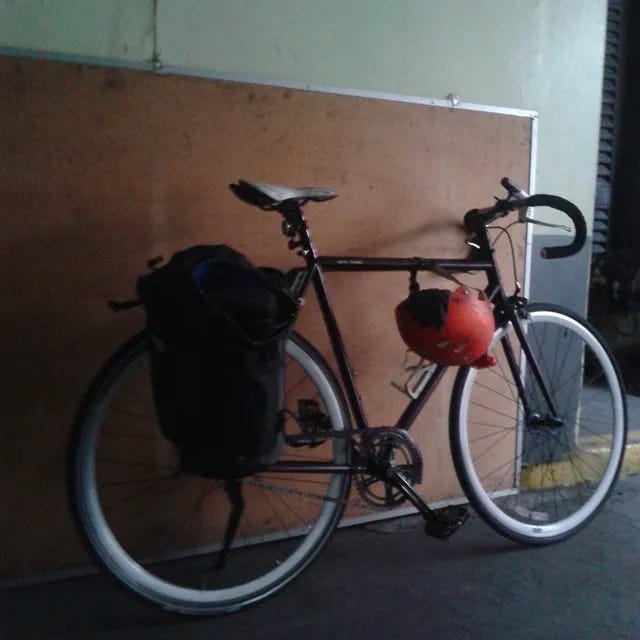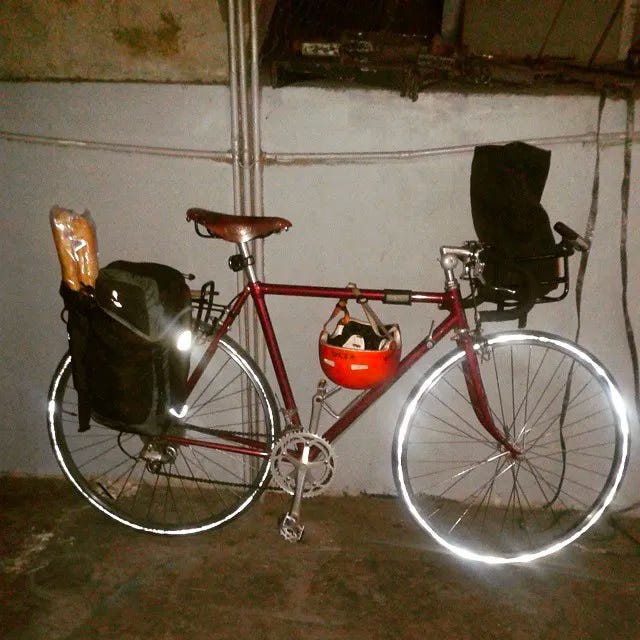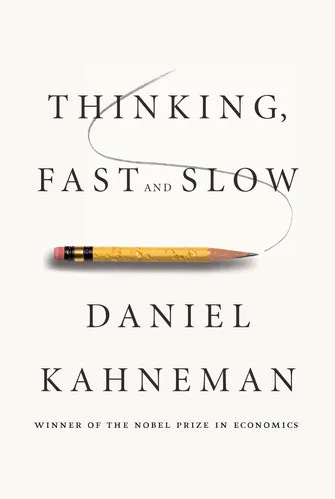
(This piece was originally written on Medium.com in October 2015. I’m sharing this here on the occasion of the death of Daniel Kahneman, Nobel Prize winner and author of Thinking, Fast and Slow, which inspired the title of this piece.)
“Our minds are in the business of turning history into something smooth and linear, which makes us underestimate randomness.”
— Nassim Nicholas Taleb, Antifragile: Things That Gain From Disorder
One
The woman sitting on my left was far too optimistic for her own good.
It was probably the adrenaline or the side effects of the medication they gave her.
She wore a light blue mask to cover the tear on her upper lip which doctors had sewn together a few minutes earlier. Her face hit the ground when she was thrown clear from her electric bike, she said. Not only did she skip on wearing a helmet, she also brought along her daughter, who was, fortunately enough, unhurt when they went out for a quick trip to the grocery that rainy Monday night.
Despite the mishap, she remained cheerful, promising to wear a helmet next time she goes out on her bike, even for a short errand.
“You’ll be up and about in no time,” she told me, in a confident, if muffled tone, after learning that I wore a helmet every time I went out on my bike. “After all, you look like you’ve got an active lifestyle.”
I didn’t exactly share her enthusiasm (since I neither have a life nor, for that matter, a style. But that’s another story).
It was already past midnight and we were both stuck in an emergency room that was packed with patients.
Most were seated, wearing jackets and sweaters, unwilling contestants in the nocturnal competition of wheeze and sneeze.
Others sat quietly, pondering their conditions — migraines, food poisoning, and ulcers.
In the meantime, there was myself, awaiting further tests, thinking that I have never enjoyed the company of so many sick people in such a small space (including, I must add, several workplaces I’ve become familiar with).
Hours earlier, I had fallen off my bike when the front wheel slipped on a wet surface inside a gasoline station.
As a result, my left knee got scraped so badly that it looked like a poorly-cooked piece of tocino.
That’s not all.
My lower left limbs got so beat up that I couldn’t walk nor stand straight. Whenever I needed to get up and move, I limped like a peg-legged pirate who was upset over his lost parrot.
Despite the sharp pain on my open wound and the incessant throbbing of my lower left limbs, I realized that I had a number of reasons to look at the bright side of life.
I had survived the fall without broken bones and none of my appendages would be cut off (yes, including those that suffered from years of disuse) although I did endure two injections as measures against tetanus.
In short, I was — and still am — one lucky bike-riding bastard.

Two
On two separate occasions during the past month, two close friends — both experienced cyclists — told me that I ride my bike way too fast.
The speed by which I travel by bike was brought up in the conversation after they saw that I still found it difficult to just stand up and walk, weeks after my accident. (Despite the limp, I could bike normally, which I did, after it was recommended by my physical therapist).
You should try to slow down, said the first, who regularly commuted by bike between Makati City, where he works, and Quezon City, where he lives.
The second one also drove home the same point since he himself, years ago, experienced what is called a lowside — when either the front or the rear wheel slips while making a turn.
My friend was already a few meters away from home when one of his wheels spun out of control after hitting an oil slick.
Save for a few minor cuts, he came home unscathed, bearing nothing but wounded pride.
A similar but a far more serious crash caused my temporary limp, by far the worst bike-related injury I’ve been through ever since I began to travel on two wheels.
I left the office past nine in the evening on The Messenger, a single-speed Jamis Sputnik bike that I used because my regular ride — a classic twelve-speed Bridgestone bike named Marta had to check into the shop for brake repairs that took longer than usual.
Although it was a stiff ride, The Messenger was quick and nimble. Its acceleration was enhanced by the front tire — it was threadless (making it faster since it didn’t “grip” the pavement) and was just an inch thick (allowing it to cut through the winds with minimal air resistance).
As I picked up speed, I decided to go home early and take the shortest way home, a route which involved cruising through a gasoline station.
We know what happened after that.*
Three
This incident prompted me to overthink — if that is at all possible — about the way I rode my bike, the way I conducted myself on the road, and the speed by which I travelled.
Did I really bike way too fast for my own good, as pointed out by two cyclist-friends? And if so, was the accident the result of overconfidence and not the fault of wet surfaces and thin, threadless tires? Was it a little bit of both? Should I have taken the long route instead and, in turn, avoided the crucial slip at the gasoline station? If so, wouldn’t the long route expose me longer to biking-related risks?
I don’t know.
But in considering all these questions, I have been reminded not only about the randomness of events — best described by Nassim Nicholas Taleb’s Fooled by Randomness and The Black Swan — I have also tried to go beyond my blinders, both mental and, if appropriate, intellectual, to consider the possibility that yes, I may have been at fault — at least partially — for what, so far, has been the worst accident of my life.
After all, on separate occasions, I have slammed bodily on an oncoming police car while going downhill, thrown clear from my bike after being sideswiped by a jeepney driver in Marikina, and chosen to fall flat on the pavement instead of colliding with a confused pedestrian in Tacloban City. [See: The Biking Gods Must Be Crazy]
During these mishaps, was I biking too fast? Or was I merely unlucky? A combo of both?
Again, I don’t know.
“We can be blind to the obvious, and we are also blind to our blindness,” said Daniel Kahnemann in his book, Thinking, Fast and Slow.
Nevertheless, whether the accidents were random occurrences or not, one thing’s for sure: I’m not going to stop riding my bike. (And yes, the leg’s fine now, thanks for asking.)
*From the Pedal to the Metal Dept. After I fell off my bike, I dusted myself off, and rode all the way home, left knee bleeding like a busted pipe. Upon arriving, I changed my shirt and took Uber to the emergency room where a nurse and a doctor, who were both gorgeous, took care of me. A part of me wants to go back to that ER, hopefully in a healthier condition.



